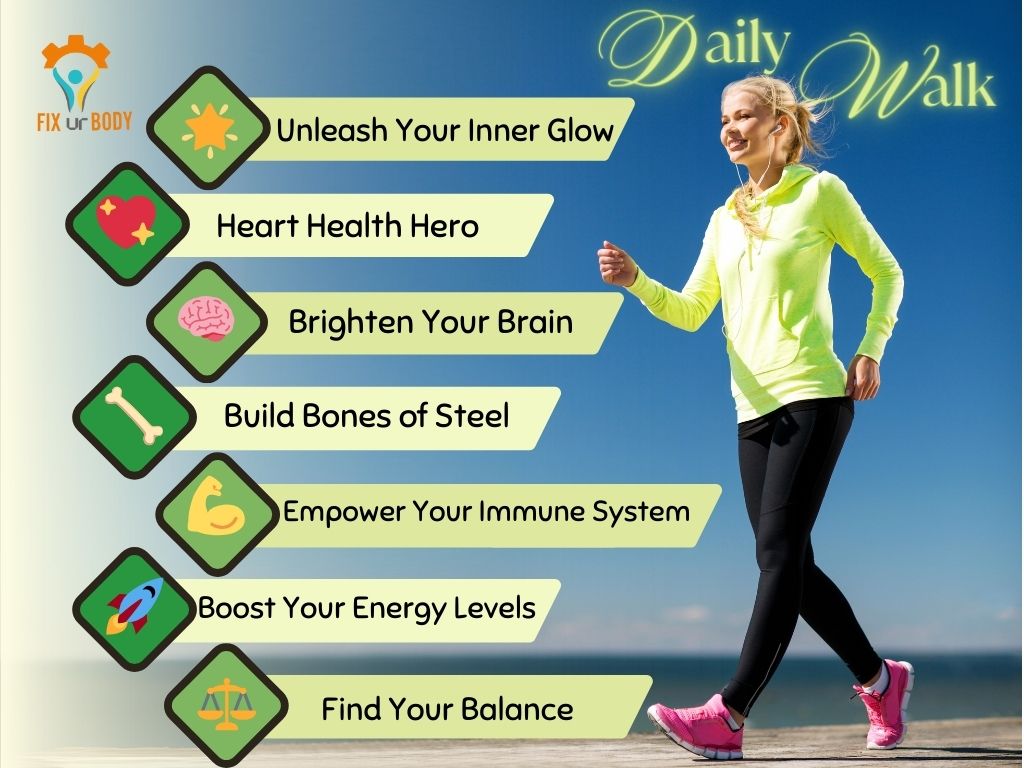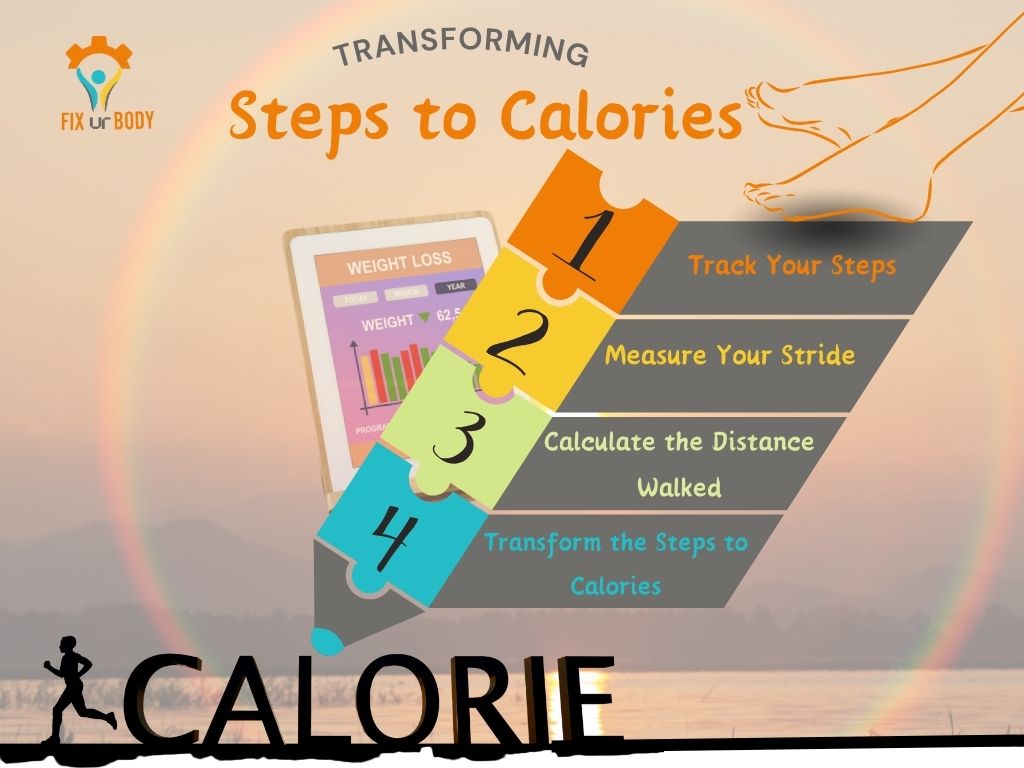In the quest for health and fitness, understanding the impact of our daily activities on our calorie expenditure is crucial. Walking, one of the most accessible forms of exercise, offers many health benefits, including calorie burning. But how do you translate the number of steps to calories burned? This article will guide you through the steps to calculate your daily caloric burn from walking, helping you to understand and optimize your physical activity for better health and wellness.
Table of Contents
Why Walking Deserves a High Five?
First off, walking is pretty awesome for you. It gets your heart pumping and muscles moving and can even lift your spirits. And yes, it burns calories, which is a big plus if you’re trying to manage your weight or boost your fitness level. The calories you burn while walking depend on your weight, speed, and the distance you cover. The cool part is how this works and how you can track it.
Here are some of the many health benefits of daily walking:
🌟 Unleash Your Inner Glow
Walking Boosts Your Mood: Ever heard of a “walker’s high”? Walking can elevate your mood thanks to the release of feel-good endorphins. It’s a natural stress-buster that can leave you feeling more joyful and relaxed.
💖 Heart Health Hero
Walking Strengthens Your Heart: Regular walks are a ticket to a healthier heart. By improving your heart rate and circulation, walking lowers the risk of heart diseases and strokes. It’s like giving your heart a gentle, loving workout, keeping it strong and resilient.
🧠 Brighten Your Brain
Walking Sharpens Your Mind: Lace up your walking shoes to keep your mind sharp and agile. Regular walks can improve your cognitive function, enhance memory, and even reduce the risk of dementia. It’s like a spa day for your brain, keeping it youthful and vibrant.
🦴 Build Bones of Steel
Walking Strengthens Bones and Joints: Regular walking increases bone density and strengthens joints, reducing the risk of osteoporosis and arthritis. It’s like armor for your bones, protecting them against the wear and tear of time.
💪 Empower Your Immune System
Walking Strengthens Your Immune System: Regular walkers enjoy fewer sick days. Walking can boost your immune system, helping you fend off colds and the flu. It’s like a shield, keeping you healthier and more resilient.
🚀 Boost Your Energy Levels
Walking Increases Energy: Feeling sluggish? Swap the caffeine for a quick walk. Walking increases oxygen flow and boosts circulation, leaving you feeling more alert and energized. It’s your natural energy drink, without the crash.
⚖️ Find Your Balance
Walking Aids in Weight Management: Strolling your way through the day can help you burn calories and maintain a healthy weight whatever your body type was. It’s a simple, sustainable form of exercise that can be easily adjusted to fit your fitness level and weight loss goals.

How to convert your steps to calories?
Understanding how to calculate calories burned is crucial, but don’t let the numbers define your walking experience. However, to change your steps to calories, follow these 4 steps and let the numbers motivate you more.
Step 1: Track Your Steps
To kick things off and translate steps to calories, you’ve got to know first how many steps you’re taking. Whether you’ve got a fancy smartwatch or just a basic app on your phone, keeping an eye on your step count is step one. Hitting 10,000 steps is a great goal, but honestly, any step more than what you’re currently doing is a step in the right direction.
Step 2: Measure Your Stride
Your stride length is pretty much how long each step you take is, and it matters because it helps figure out how far you’ve actually walked. You can calculate this by measuring the distance of a walk you know the length of and dividing it by the steps you took. This bit of math helps make your calorie count more accurate later on.
Step 3: Calculate the Distance Walked
With your stride length in hand, multiply it by your step count to see how much ground you’ve covered over the day. For instance, if you’re stepping 2.5 feet at a time and hit 10,000 steps, you’ve walked about 4.7 miles. Not too shabby, right?
Step 4: Transforming the Steps to Calories
Now, to the part you’ve been waiting for—figuring out those calories burned. Here’s a simple equation to get you started:
Calories burned per mile=Your weight in pounds×0.57
Multiply that by the miles you’ve walked, and voilà, you have a ballpark figure of the calories you’ve burned. This estimate works for an average pace and fitness level, but remember, it’s just that—an estimate. Things like walking speed, hills, and your own body can tweak the final number.

Walking: It’s About More Than Just Calories
While knowing how to translate steps to calories burned is excellent, walking’s benefits stretch beyond that. It’s about getting your heart rate up, clearing your mind, catching up with friends, or exploring new paths. Plus, it’s an easy exercise to stick with, which is half the battle, right?
Incorporate walking into your daily routine as a non-negotiable activity, just like eating or sleeping. Consistency is key. Aim for regular, brisk walks rather than occasional marathon sessions. Consistent effort is what leads to lasting change.
Follow up these tips to motivate yourself for consistent walks:
1. Gear Up
Investing in a good pair of walking shoes can make a world of difference. Look for shoes with proper support and cushioning to protect your joints and make your walks more comfortable. The right gear can prevent injuries and make your walking experience much more enjoyable.
2. Set Achievable Goals
Start with small, realistic goals and gradually increase your distance or step count. Celebrate every milestone to keep yourself motivated. Setting achievable goals makes the process rewarding and encourages you to push further.
3. Create a Walking Playlist
Music can be a great motivator. Create a playlist of your favorite upbeat songs to keep your energy high and your mood lifted. Alternatively, listen to audiobooks or podcasts to make the time fly by on longer walks.
4. Explore New Areas
Keep your walking routine exciting by exploring new neighborhoods, parks, or trails. This not only adds variety but also allows you to discover new sights and sounds, making each walk an adventure.
5. Join a Community
Everything’s better with friends, including walking. Joining a walking group or finding a walking buddy can keep you motivated and accountable. Plus, it’s a great way to socialize and make new friends who share your interest in staying active.
6. Reward Yourself
Set up a reward system for reaching your walking goals. This could be anything from a relaxing bath to a new book or a special treat. Rewards can serve as a great incentive to keep you moving.
By incorporating these tips into your routine, walking can become a more integral, enjoyable, and rewarding part of your daily life, contributing significantly to both your physical and mental well-being.

Wrapping It Up
So there you have it—how to turn those steps to calories burned, giving you a bit more insight into your daily activities. Remember, the goal isn’t just to obsess over calories but to celebrate walking as a simple, effective way to keep active and healthy. Here’s to taking those steps, one foot at a time, towards a healthier you.
Frequently Asked Questions (FAQs) About Walking and Steps to Calories:
How fast should I be walking to maximize health benefits?
Walking at a brisk pace of about 3 to 4.5 mph is generally recommended to maximize health benefits, including improved heart health, increased calorie burn, and enhanced aerobic fitness. Adjust your pace according to your fitness level and health goals.
What is the best time of day to walk?
The best time of day to walk depends on your personal schedule and preferences. Some people enjoy starting their day with a morning walk to boost energy and focus, while others prefer evening walks to unwind and relax. The most important thing is to find a time that fits your lifestyle and stick with it.
Do I need special equipment for walking?
No special equipment is needed for walking, but a good pair of comfortable, supportive walking shoes can enhance your experience and help prevent injuries. You may also consider using a pedometer or fitness tracker to monitor your steps and progress.
How does walking compare to running in terms of health benefits?
Walking and running both offer significant health benefits, including improved cardiovascular health, weight management, and reduced risk of chronic diseases. Walking is lower impact, making it more accessible for people of all ages and fitness levels. Running burns more calories per minute, but walking can be just as effective when done for longer durations or at a brisk pace.








